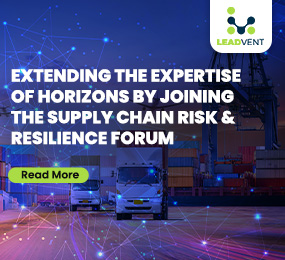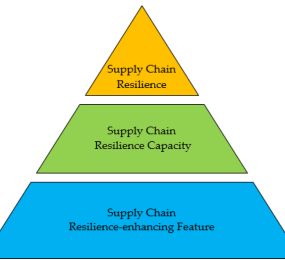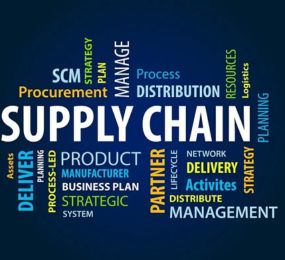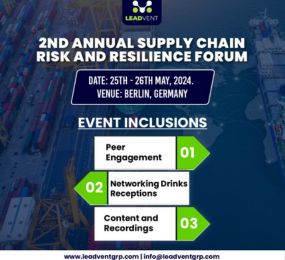Today, as businesses are becoming more globalised, supply chain disruption has increasingly turned into a big risk. All this contributed to the growing worry about the global phenomenon of pandemics, natural disasters and cyber-attacks. For long-term success, therefore, companies need to know the effective way of responding to such disruptions.
Supply chain risk management is a process of identifying and managing risks in a business’s supply chain to ensure a smooth run. With this forward mindset, organisations can thus respond to potential disruptions easily and not at all impair their effects.
The Growing Importance of Supply Chain Risk
Supply chain risk means anything interrupting the flow of goods and services. Nowadays, however, the complexity of supply chains is increasing the frequency of these risks. The Business Continuity Institute in its report stated that Eighty Three Percent of the supply chain leaders had at least one major disruption last year. That demands that businesses adopt effective supply chain risk management techniques.
Case Study: Toyota’s Response to the Chip Shortage
In recent years, the nut found was the semiconductor chip shortage that hit the world hard. Although it was known for lean, timely manufacturing, the company had to adjust its production schedules. Importantly, even the most efficient supply chains can be vulnerable, and it is important to include resiliency in supply chain risk management strategies, as this case pertains to.
The Supply Chain Disruption is Fundamentally a Problem of Managing Risk
Proactive preparation is an effective part of supply chain risk management. Here are four key strategies:
1. Increase Visibility and Transparency
Businesses must have single-source visibility up and down their supply chain. AI and blockchain bring about technologies that assist companies in tracking and also allow real-time data that allows them to quickly respond to disruptions. Supply chains driven by AI will decrease their disruption response time by about Forty-Five Percent.
2. Diversification of Suppliers
Too much dependency on any particular supplier makes the company easily afflicted. For example, natural disasters and political issues could have effects on specific regions. Hence, guarding against these problems would be incorporating suppliers from different areas instead of relying wholly on one source.
3. Scenario Planning and Simulation
Scenario planning prepares an organisation to understand risk. It will simulate different unexpected situations; therefore, a decision-making strategy for a kind of Supply Chain Management Conference will take place in realising that it will be faster to decide.
4. Technology Investment
This provides rapid adaptability to the companies, bringing automation, the Internet of Things plus cloud-based platforms into use. The technologies enable swift redeployment of activities by the respective companies in case of disruptions while reducing operational impacts from disruption events.
Why Supply Chain Risk Management is Critical for Business Success
An all-encompassing supply chain risk management system helps in remaining competitive. Companies with good-risk strategies show 30% higher service levels and 20% lower operating expenses, writes McKinsey in its 2022 report. Being proactive in managing supply chain risks enables an organisation to maintain that competitive edge in an unpredictable business environment.
Event Spotlight: 2nd Annual Supply Chain Risk and Resilience Forum
On 6-7 May 2025, Leadvent presents its 2nd Annual Supply Chain Risk and Resilience Forum in hybrid mode in Amsterdam, the Netherlands. This Supply Chain Management Conference will highlight, among other things, best practices on supply chain risk management as they relate to the challenges of global pandemic emergencies, cyber risks, and digital transformation.
What to Expect at the Forum
- Case Study Presentations: Practical cases presenting down-to-earth insights into managing disruptions.
- Panel Discussions: An opportunity for engaging conversation among industry leaders about strategic topics.
- Networking Drinks Receptions: Join senior industry professionals and build meaningful contacts.
- Content-Roundtables: Engage with peers and experts in in-depth discussions on key topics.
- Key Industry Insights: Be exposed to cutting-edge solutions to improve supply chain risk management.
- Event Documentation: Full access to speakers' presentations and event material.
Why Attend?
Supply Chain Risk and Resilience Forum offers widely unique opportunities for professionals:
- Learn about supply chain risk management directly from industry leaders.
- Explore innovative solutions for building supply chain resilience.
- Network with top-edition executives and players from other industries.
Event Information
- Event: 2nd Annual Supply Chain Risk and Resilience Forum
- Date: 6th and 7th May 2025
- Location: Hybrid Mode, Amsterdam, Netherlands
- Registration: https://www.leadventgrp.com/event/2nd-annual-supply-chain-risk-and-resilience-forum/register
For more details and signup, visit Leadvent's official event page.
Conclusion
Supply chain disruptions present themselves naturally through time, yet businesses that deploy sturdy risk management with resilience solutions succeed in these challenges. Businesses gain exclusive knowledge from leaders and develop fortified supply chains when they participate in the 2nd Annual Supply Chain Risk and Resilience Forum.
Frequently Asked Questions
Participation in the Supply Chain Risk and Resilience Forum brings what advantages to companies?
Business participants will receive useful information and commercial tactics from industry commanders to develop their supply chain resilience capabilities and risk management operations.
Does this particular event cater to businesses with small operational scales?
The forum delivers adaptable insights together with sensible business strategies that provide benefits for organisations across the entire spectrum of business sizes.
Organisations should review their supply chain risk management strategy in what timeframe?
Every quarter organisations need to perform evaluations which keep their strategies current with emerging risks and market trends across the world.
















